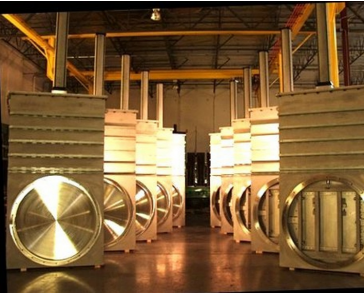Exploring Essential Vacuum Components: Gate Valves and KF Flanges Guide
THE FOUNDATION OF PRECISION IN VACUUM TECHNOLOGY
In the complex world of vacuum technology, precision and reliability are non-negotiable. Every laboratory, research facility, and industrial vacuum application depends heavily on the right components to ensure accuracy and control. The integrity of a vacuum system can be significantly influenced by the type of valves and flanges used. Among the most critical components are High Vacuum Gate Valves, which serve as indispensable tools for controlling vacuum flow and maintaining system pressure. Understanding their importance and function is essential for achieving optimal system performance.

UNDERSTANDING THE ROLE OF HIGH VACUUM GATE VALVES
Vacuum systems often require an efficient mechanism to isolate various chambers or sections without compromising the internal pressure. High Vacuum Gate Valves are specifically engineered for this purpose, offering a tight seal and long operational life under high vacuum conditions. Positioned between chambers or between a chamber and a pump, these valves can effectively block or allow passage of gas and particles, depending on system needs. Many high-end applications in semiconductor processing, space simulation, and surface science rely on these valves for their robustness, precision, and minimal outgassing.
FEATURES AND BENEFITS OF HIGH VACUUM GATE VALVES
The reliability of High Vacuum Gate Valves stems from their advanced construction, typically involving stainless steel materials, bellows-sealed mechanisms, and low-friction operation. These valves are designed to operate under extreme conditions without failure, making them suitable for ultra-clean environments. Another vital benefit is the minimal particle generation, a critical factor in contamination-sensitive fields. These valves are available in various actuation styles—manual, pneumatic, and motorized—offering flexibility in different system configurations. Selecting the correct valve type can drastically reduce maintenance requirements and extend the longevity of the vacuum system.
KF FLANGES FOR VACUUM: STANDARDIZATION AND EFFICIENCY
Flanges play a crucial role in vacuum systems by ensuring a secure and leak-tight connection between components. Kf Flanges for Vacuum are one of the most widely adopted solutions in this domain, valued for their simplicity and standardization. Also known as Klein Flanges or Quick Flanges, these components are used primarily in low and high vacuum applications, offering easy assembly and disassembly. They are typically made from aluminum or stainless steel and are ideal for laboratory and research setups due to their compact design and repeatable performance.
ADVANTAGES OF USING KF FLANGES FOR VACUUM SYSTEMS
One of the standout features of Kf Flanges for Vacuum is their versatility across different vacuum levels and compatibility with a broad range of components. The flanges utilize an O-ring seal combined with a centering ring to ensure a consistent vacuum-tight fit. These features not only make installation quicker but also reduce the potential for leaks, which is vital in maintaining system integrity. With a wide range of sizes and accessories available, these flanges support modular system design, enabling fast system reconfiguration. Their widespread use in academic and industrial research further reflects their reliability.
CHOOSING THE RIGHT KF FLANGES FOR VACUUM SETUPS
Selecting appropriate Kf Flanges for Vacuum setups requires careful consideration of system pressure, material compatibility, and flange size. Proper alignment and torque during assembly are also essential for maintaining long-term vacuum conditions. When correctly installed, these flanges contribute to the system’s ease of maintenance and enhance its adaptability. They are especially favored in environments where system modification or quick turnaround is frequently required. Their standardization across the industry allows for easy sourcing and interchangeability, reducing operational downtime and procurement complexity.
CONCLUSION: THE IMPORTANCE OF QUALITY COMPONENTS IN VACUUM SYSTEMS
Vacuum systems are only as reliable as the components that comprise them. From isolating chambers with precision to ensuring tight, leak-free connections, components like High Vacuum Gate Valves and Kf Flanges for Vacuum form the backbone of any functional vacuum setup. Their application spans across numerous industries, each demanding consistency, durability, and efficiency. Investing in high-quality vacuum hardware is essential to prevent downtime, reduce contamination, and enhance overall system productivity. For industry-grade solutions backed by years of engineering expertise, vacuumchamber.com offers a comprehensive selection tailored to meet the most rigorous vacuum technology standards.
For more info:-

Comments
Post a Comment